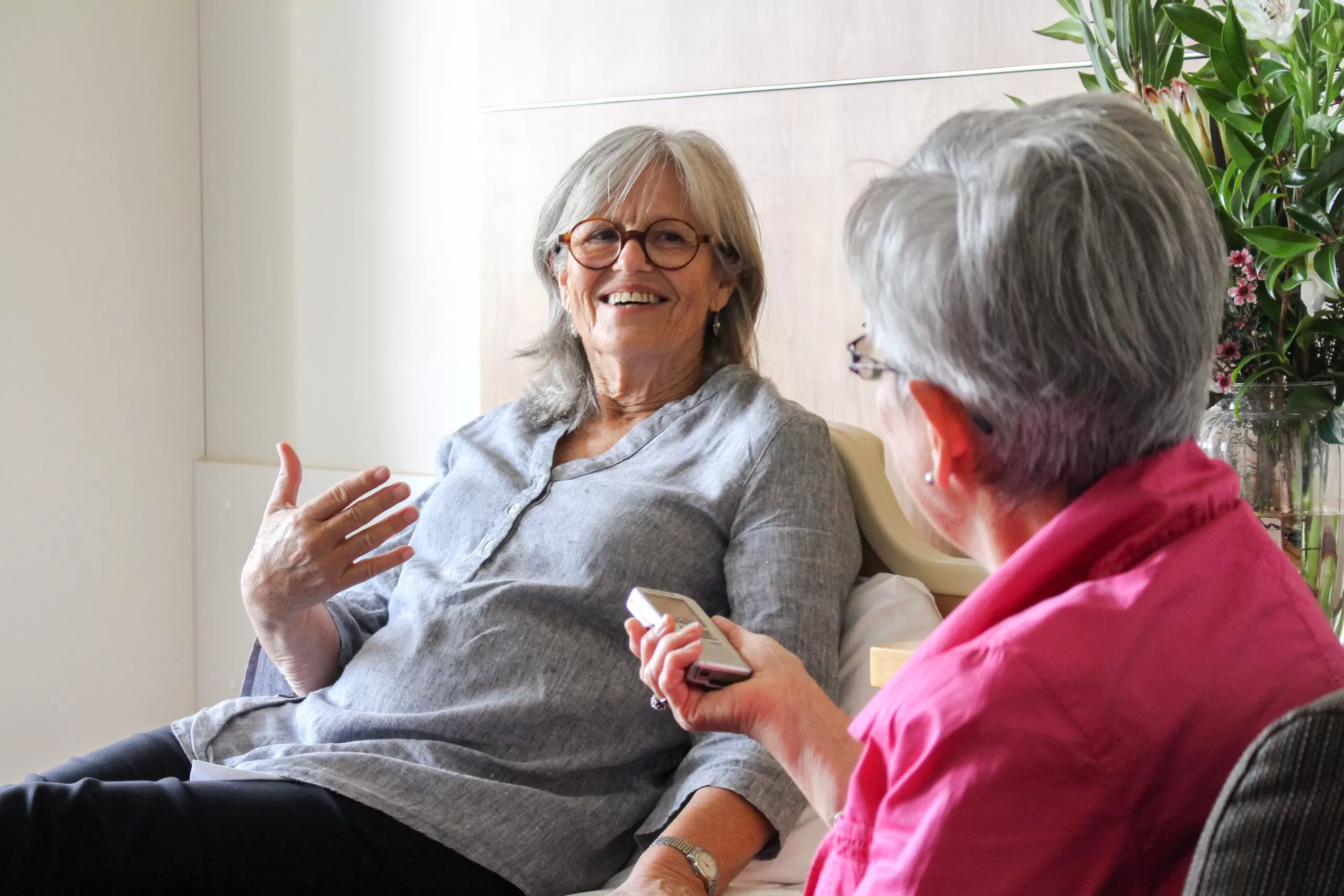
RESOURCES
Nausea and vomiting
Nausea is a feeling in the upper stomach of wanting to be sick or vomit. A patient will usually feel nauseous before vomiting, but may not always actually vomit.
Vomiting (being sick) is emptying the contents of the stomach through the mouth. It may be voluntary or involuntary.
Nausea and vomiting are unpleasant for patients and can lessen their quality of life.
Ways to reduce nausea and vomiting
- Take away any triggers, such as food, deodorants, air fresheners, perfumes and
other strong-smelling items. - Make sure there is plenty of fresh air in the room. Use a fan or open a window.
- Make sure the patient wears loose-fitting cool clothing.
- Give frequent mouth washes. Try 1/2 teaspoon baking soda and 1/2 teaspoon salt in 250 ml water as a mouthwash. Alternatively, use a mouthwash such as Savacol™ or Listerine™.
- If the patient can tolerate them, offer peppermints, sour candy, crystallized ginger, ice chips made from lemon or pineapple based juice, or ginger ale.
- Some patients may prefer peppermint or ginger tea, hot or iced, just as they like.
- If the patient is still eating, offer small amounts of bland foods, fluids and snacks at room temperature.
- When eating or drinking the patient should sit upright as much as possible.
- Place a tissue dampened with drops of peppermint oil near the patient’s pillow.
- If the patient is nauseated, make sure a vomit container is close.
Other ways to help reduce nausea
Guided imagery/visualization
This encourages the patient to imagine they are in another place with pleasant associations for them. This can assist to block feelings of nausea.
Music Therapy
Play gentle music that the patient enjoys. This can relieve stress and anxiety and give a sense of well-being.
Distraction
Take the patient’s mind off how bad they are feeling by chatting about pleasant family memories and routines. Play DVDs, or look at some photos.
Acupressure
Acupressure wristbands, such as those used to relieve travel sickness, may help. These are available from many pharmacies.
References
Doyle, D., Hanks, G.W.C. and MacDonald, N. (Eds.) (2004) Oxford textbook of palliative medicine. 3rd edn. Oxford: Oxford University Press.
Ernst, E., Pittler, M.H. and Wider, B. (Eds.) (2006) Nausea and vomiting. In: The desktop guide to complementary and alternative medicine: an evidence-based approach. 2nd edn. London: Mosby Elsevier. 214-224.
Kinley, J. (2005) Controlling nausea and vomiting in palliative care patients. Nurse Prescribing 3(4), 141-150.
Pan CX, et al. (2000) Complementary and alternative medicine in the management of pain, dyspnea and nausea and vomiting near the endof-life: a systematic review, J Pain Sym Manage. 20:374-387.
Perdue, C. (2005) Understanding nausea and vomiting in advanced cancer. Nursing Times 101(4), 32-35.
Fact Sheets: National LCP Office, New Zealand (Working Group in alphabetical order) L Angus, J Boxall, C Fowles, F Gillies, B Marshall and A Roguski. (2012)
Share this Mercy Story

Do you have a Mercy story you would like to share with readers of Mercy Matters?
Send your story and images to [email protected].
Continue the Care. Click here to make a safe online donation to Mercy Hospice
Related posts
If you enjoyed reading this, then please explore our other articles below:


